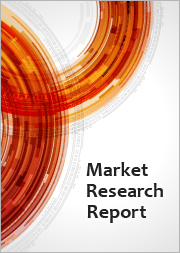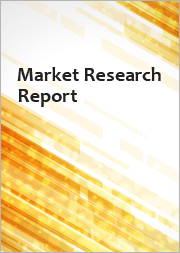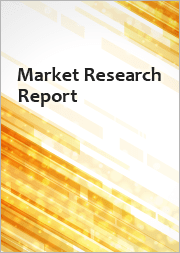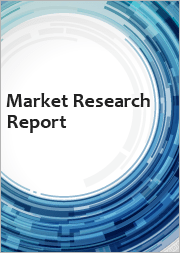
|
시장보고서
상품코드
1462854
세계의 의료용 종양학 소프트웨어 시장 규모 조사 및 예측 : 도입 유형별, 용도별, 최종사용자별, 지역별 분석(2023-2030년)Global Medical Oncology Software Market Size Study & Forecast, by Deployment Type, by Application, by End User, and Regional Analysis, 2023-2030 |
||||||
세계의 의료용 종양학 소프트웨어 시장은 2022년에 약 24억 달러로 평가되며, 예측 기간인 2023-2030년에는 7.5% 이상의 건전한 성장률로 성장할 것으로 예측되고 있습니다.
종양학 의료 소프트웨어는 의료진이 화학요법, 표적치료, 면역요법, 호르몬 요법 등 전신 암 치료를 정확하게 수행할 수 있도록 지원하는 중요한 종양학 정보 시스템입니다. 이 소프트웨어는 환자 데이터 관리, 치료 계획, 투약 일정, 임상 의사 결정 지원, 종양 전문의의 치료 부작용 모니터링 등을 효율화합니다. 전체 시장 성장에는 암 발병률 증가, 종양학 정보학을 활용한 연구 활동 활성화, 일관된 치료 전략을 위한 전자 의료 기록(EHR) 도입 증가, 게놈 데이터를 활용한 개인 맞춤형 치료 계획 개발, 의료 서비스의 디지털화 진행, 암 치료 강화에 대한 투자 증가 등 여러 가지 주요 요인이 기여하고 있습니다. 여러 가지 중요한 요인이 기여하고 있습니다.
또한 암 환자의 급증은 환자 기록 관리 및 치료 계획에 필수적인 종양학 의료 소프트웨어에 대한 수요를 촉진합니다. 전 세계에서 새로운 암 환자 수가 증가하면서 의료 시스템에 큰 부담을 주고 있습니다. 진단과 치료 전반에 걸친 효율적인 관리가 필수적이기 때문에 의료용 종양학 소프트웨어의 필요성이 증가하고 있습니다. 예를 들어 미국암협회가 2023년 1월 발표한 논문에 따르면 2023년 신규 암 환자 수는 195만 8,310명으로 증가할 것이며, 이에 따라 미국내 암 관련 사망자 수는 60만 9,820명에 달할 것으로 추산 및 예측했습니다. 또한 면역력 저하로 인해 노인 환자들의 암 유병률이 높아지면서 암 발생률이 더욱 높아져 시장 추정 및 예측 기간 중 시장 성장에 박차를 가할 것으로 보입니다. 따라서 앞서 언급한 요인들은 2023-2030년 추정 기간 중 의료 종양학 소프트웨어 시장의 성장을 가속하고 있습니다. 또한 기술 발전 증가와 항암제 개발의 급증은 예측 기간 중 다양한 유리한 기회를 제공하는 데 크게 기여하고 있습니다. 그러나 사이버 공격 및 데이터 침해 행위의 위험 증가, 높은 비용 및 복잡한 통합은 2023-2030년의 예측 기간 중 시장 성장에 대한 도전 과제가 될 것입니다.
세계 의료 종양학 소프트웨어 시장 조사에서 고려된 주요 지역으로는 아시아태평양, 북미, 유럽, 라틴아메리카, 중동 및 아프리카가 있습니다. 북미는 집중 치료 추세 증가, 암 치료 센터 설립 증가, 종양학 소프트웨어의 기술 발전으로 인해 2022년 시장을 장악했습니다. 반면 아시아태평양은 예측 기간 중 가장 높은 CAGR로 성장할 것으로 예상됩니다. 암 발병률 증가, 고령화 인구 증가, 주요 기업의 출현, 투자 기회 확대, 종양학 소프트웨어 솔루션을 개발하는 기업 증가 등이 이 지역의 전체 시장 수요를 크게 촉진하고 있습니다. 예를 들어 2022년 8월 National Cancer Grid(NCG)는 인도 전역에 디지털 기술과 툴을 통한 암 치료 발전을 목표로 하는 Koita Centre for Digital Oncology(KCDO)를 출범시켰습니다. 디지털 헬스 툴의 채택을 촉진하고, 디지털 헬스 실천, 의료 데이터 상호운용성 및 전자 의
본 조사의 목적은 최근 다양한 부문과 국가의 시장 규모를 정의하고, 향후 수년간 가치를 예측하는 것입니다. 조사 대상국에서 업계의 질적·양적 측면을 포함시키도록 설계되고 있습니다.
또한 시장의 향후 성장을 규정하는 촉진요인 및 과제 등의 중요한 측면에 관한 상세 정보도 제공하고 있습니다. 또한 주요 기업의 경쟁 구도 및 제품 제공의 상세 분석과 함께 이해관계자가 투자하기 위한 미시적 시장의 잠재적 기회도 포함하고 있습니다.
목차
제1장 주요 요약
제2장 세계의 의료용 종양학 소프트웨어 시장 정의와 범위
- 조사 목적
- 시장의 정의와 범위
- 업계의 진화
- 조사 범위
- 조사 대상년
- 통화 환산율
제3장 세계의 의료용 종양학 소프트웨어 시장 역학
- 의료용 종양학 소프트웨어 시장의 영향 분석(2020-2030년)
- 시장 촉진요인
- 일관된 치료 전략을 위한 전자건강기록(EHR) 도입의 증가
- 암환자의 급증
- 시장이 해결해야 할 과제
- 사이버 공격 및 데이터 침해 행위의 리스크 증대
- 고비용과 복잡한 통합
- 시장 기회
- 기술적 진보의 증가
- 항암제 개발의 급속한 보급
- 시장 촉진요인
제4장 세계의 의료용 종양학 소프트웨어 시장 산업 분석
- Porter's Five Forces 모델
- 공급 기업의 교섭력
- 구매자의 교섭력
- 신규 진출업체의 위협
- 대체품의 위협
- 경쟁 기업간 경쟁 관계
- Porter's Five Forces 영향 분석
- PEST 분석
- 정치
- 경제
- 사회
- 기술
- 환경
- 법률
- 주요 투자 기회
- 주요 성공 전략
- COVID-19 영향 분석
- 파괴적 동향
- 업계 전문가의 시점
- 애널리스트의 결론·제안
제5장 세계의 의료용 종양학 소프트웨어 시장 : 도입 유형별
- 시장 스냅숏
- 세계의 의료용 종양학 소프트웨어 시장 : 도입 유형별, 실적 - 잠재력 분석
- 세계의 의료용 종양학 소프트웨어 시장 : 도입 유형별 추정·예측 2020-2030년
- 의료용 종양학 소프트웨어 시장, 하위 부문 분석
- 클라우드
- 온프레미스
- 하이브리드
제6장 세계의 의료용 종양학 소프트웨어 시장 : 용도별
- 시장 스냅숏
- 세계의 의료용 종양학 소프트웨어 시장 : 용도별, 실적 - 잠재력 분석
- 세계의 의료용 종양학 소프트웨어 시장 : 용도별 추정·예측 2020-2030년
- 의료용 종양학 소프트웨어 시장, 하위 부문 분석
- 치료 계획
- 환자 기록 관리
- 임상 의사결정 지원
- 기타
제7장 세계의 의료용 종양학 소프트웨어 시장 : 최종사용자별
- 시장 스냅숏
- 세계의 의료용 종양학 소프트웨어 시장 : 최종사용자별, 실적 - 잠재력 분석
- 세계의 의료용 종양학 소프트웨어 시장 : 최종사용자별 추정·예측 2020-2030년
- 의료용 종양학 소프트웨어 시장, 하위 부문 분석
- 병원 및 전문 클리닉
- 진단 센터
- 연구기관
- 기타
제8장 세계의 의료용 종양학 소프트웨어 시장 : 지역별 분석
- 주요 국가
- 신흥 국가
- 의료용 종양학 소프트웨어 시장, 지역별 시장 스냅숏
- 북미
- 미국
- 도입 유형 추정·예측, 2020-2030년
- 애플리케이션 추정·예측, 2020-2030년
- 최종사용자의 추정·예측, 2020-2030년
- 캐나다
- 미국
- 유럽 의료용 종양학 소프트웨어 시장 스냅숏
- 영국
- 독일
- 프랑스
- 스페인
- 이탈리아
- 기타 유럽
- 아시아태평양 의료용 종양학 소프트웨어 시장 스냅숏
- 중국
- 인도
- 일본
- 호주
- 한국
- 기타 아시아태평양
- 라틴아메리카의 의료용 종양학 소프트웨어 시장 스냅숏
- 브라질
- 멕시코
- 중동 및 아프리카
- 사우디아라비아
- 남아프리카공화국
- 기타 중동 및 아프리카
제9장 경쟁 정보
- 주요 기업의 SWOT 분석
- 주요 시장 전략
- 기업 개요
- Epic Systems Corporation(U.S.)
- 주요 정보
- 개요
- 재무(데이터의 가용성에 따름)
- 제품 개요
- 최근 동향
- Altai, Inc.(U.S.)
- Varian Medical Systems, Inc.(Siemens Healthineers AG)(U.S.)
- Cerner Corporation(Oracle)(U.S.)
- American Medical Software(U.S.)
- Elekta(Sweden)
- EndoSoft LLC(U.S.)
- RaySearch Laboratories(Sweden)
- Mckesson Corporation(U.S.)
- Koninklijke Philips N.V.(Netherlands)
- Epic Systems Corporation(U.S.)
제10장 조사 프로세스
- 조사 프로세스
- 데이터 마이닝
- 분석
- 시장 추정
- 검증
- 출판
- 조사 속성
- 조사 전제조건
Global Medical Oncology Software Market is valued at approximately USD 2.40 billion in 2022 and is anticipated to grow with a healthy growth rate of more than 7.5% over during the forecast period 2023-2030. Medical oncology software is a vital oncology informatics system, supporting healthcare providers in the precise administration of systemic cancer treatments such as chemotherapy, targeted therapy, immunotherapy, and hormone therapy. This software streamlines patient data management, treatment planning, medication scheduling, clinical decision support, and monitoring of treatment side effects for oncologists. The overall market growth is fueled by several key factors, including the increasing prevalence of cancer, a rise in research activities utilizing oncology informatics, rising adoption of Electronic Health Records (EHR) for cohesive treatment strategies, development of personalized treatment plans using genomic data the ongoing digitization of healthcare services, and increased investment in enhancing cancer care.
In addition, the surge in cancer cases is set to propel the demand for medical oncology software, crucial for patient record management and treatment planning. There is a significant strain on healthcare systems with the increasing number of new cancer cases globally. Efficient management across diagnosis and treatment becomes imperative, intensifying the need for medical oncology software. For instance, an article published by the American Cancer Society in January 2023 forecasts a rise in new cancer cases to 1,958,310 in 2023, accompanied by an estimated 609,820 cancer-related deaths in the U.S. Additionally, cancer prevalence is higher among geriatric patients due to weakened immunity, further driving the incidence of cancer and consequently fueling market growth throughout the forecast period. Thus, these aforementioned factors are propelling the growth of the Medical Oncology Software Market during the estimated period of 2023-2030. Furthermore, increasing technological advancements and the proliferation of cancer drug development significantly contribute to the present various lucrative opportunities over the forecast years. However, the growing risk of cyber-attacks and data breaching activities and the high cost and complex integration are is challenging the market growth throughout the forecast period of 2023-2030.
The key regions considered for the Global Medical Oncology Software Market study include Asia Pacific, North America, Europe, Latin America, and Middle East & Africa. North America dominated the market in 2022 owing to the rising trend of centralized care, the growing establishment of cancer care centers, and the increase in technological advancements in oncology software. Whereas, Asia Pacific is expected to grow at the highest CAGR over the forecast years. The increase in the incidence of cancer, the expanding aging population, the emergence of key players, growing investment opportunities, and an increasing influx of companies developing oncology software solutions are significantly propelling the market demand across the region. For instance, in August 2022, The National Cancer Grid (NCG) inaugurated the Koita Centre for Digital Oncology (KCDO) aimed at advancing cancer care through digital technologies and tools across India. The KCDO supports NCG hospitals by facilitating the adoption of digital health tools, implementing digital health practices, and spearheading technology initiatives such as healthcare data interoperability and Electronic Medical Record (EMR) adoption.
Major market players included in this report are:
- Epic Systems Corporation (U.S.)
- Altai, Inc. (U.S.)
- Varian Medical Systems, Inc. (Siemens Healthineers AG) (U.S.)
- Cerner Corporation (Oracle) (U.S.)
- American Medical Software (U.S.)
- Elekta (Sweden)
- EndoSoft LLC (U.S.)
- RaySearch Laboratories (Sweden)
- Mckesson Corporation (U.S.)
- Koninklijke Philips N.V. (Netherlands)
Recent Developments in the Market:
- In April 2023, Epic Systems Corporation announced an expansion of its collaboration with Microsoft, focusing on integrating generative artificial Artificial intelligence Intelligence (AI) technology into electronic health records. This partnership aims to enhance providers' productivity, alleviate administrative burdens, and elevate patient care by granting clinicians more time to dedicate to their patients.
- In February 2023, Varian Medical Systems, Inc., operating under Siemens Healthineers, unveiled its collaboration with Nova Scotia Health to expedite the digital transformation of the health system's comprehensive oncology service line. Through this collaboration, Varian Medical Systems, Inc. endeavours to offer a range of multidisciplinary oncology solutions aimed at fostering connectivity among cancer patients and optimizing patient care across their entire cancer care continuum.
Global Medical Oncology Software Market Report Scope:
- Historical Data - 2020 - 2021
- Base Year for Estimation - 2022
- Forecast period - 2023-2030
- Report Coverage - Revenue forecast, Company Ranking, Competitive Landscape, Growth factors, and Trends
- Segments Covered - Deployment Type, Application, End User, Region
- Regional Scope - North America; Europe; Asia Pacific; Latin America; Middle East & Africa
- Customization Scope - Free report customization (equivalent up to 8 analyst's working hours) with purchase. Addition or alteration to country, regional & segment scope*
The objective of the study is to define market sizes of different segments & countries in recent years and to forecast the values to the coming years. The report is designed to incorporate both qualitative and quantitative aspects of the industry within countries involved in the study.
The report also caters detailed information about the crucial aspects such as driving factors & challenges which will define the future growth of the market. Additionally, it also incorporates potential opportunities in micro markets for stakeholders to invest along with the detailed analysis of competitive landscape and product offerings of key players. The detailed segments and sub-segment of the market are explained below:
By Deployment Type:
- Clouds
- On-premise
- Hybrid
By Application:
- Treatment Planning
- Patient Record Management
- Clinical Decision Support
- Others
By End User:
- Hospitals & Specialty Clinics
- Diagnostic Centers
- Research Institutes
- Others
By Region:
- North America
- U.S.
- Canada
- Europe
- UK
- Germany
- France
- Spain
- Italy
- ROE
- Asia Pacific
- China
- India
- Japan
- Australia
- South Korea
- RoAPAC
- Latin America
- Brazil
- Mexico
- Middle East & Africa
- Saudi Arabia
- South Africa
- Rest of Middle East & Africa
Table of Contents
Chapter 1.Executive Summary
- 1.1.Market Snapshot
- 1.2.Global & Segmental Market Estimates & Forecasts, 2020-2030 (USD Billion)
- 1.2.1.Medical Oncology Software Market, by Region, 2020-2030 (USD Billion)
- 1.2.2.Medical Oncology Software Market, by Deployment Type, 2020-2030 (USD Billion)
- 1.2.3.Medical Oncology Software Market, by Application, 2020-2030 (USD Billion)
- 1.2.4.Medical Oncology Software Market, by End User, 2020-2030 (USD Billion)
- 1.3.Key Trends
- 1.4.Estimation Methodology
- 1.5.Research Assumption
Chapter 2.Global Medical Oncology Software Market Definition and Scope
- 2.1.Objective of the Study
- 2.2.Market Definition & Scope
- 2.2.1.Industry Evolution
- 2.2.2.Scope of the Study
- 2.3.Years Considered for the Study
- 2.4.Currency Conversion Rates
Chapter 3.Global Medical Oncology Software Market Dynamics
- 3.1.Medical Oncology Software Market Impact Analysis (2020-2030)
- 3.1.1.Market Drivers
- 3.1.1.1.Increasing adoption of Electronic Health Records (EHR) for cohesive treatment strategies
- 3.1.1.2.Surge in cancer cases
- 3.1.2.Market Challenges
- 3.1.2.1.Growing risk of cyber-attack and data breaching activities
- 3.1.2.2.High cost and complex integration
- 3.1.3.Market Opportunities
- 3.1.3.1.Increasing technological advancements
- 3.1.3.2.Rapid proliferation of cancer drug development
- 3.1.1.Market Drivers
Chapter 4.Global Medical Oncology Software Market Industry Analysis
- 4.1.Porter's 5 Force Model
- 4.1.1.Bargaining Power of Suppliers
- 4.1.2.Bargaining Power of Buyers
- 4.1.3.Threat of New Entrants
- 4.1.4.Threat of Substitutes
- 4.1.5.Competitive Rivalry
- 4.2.Porter's 5 Force Impact Analysis
- 4.3.PEST Analysis
- 4.3.1.Political
- 4.3.2.Economical
- 4.3.3.Social
- 4.3.4.Technological
- 4.3.5.Environmental
- 4.3.6.Legal
- 4.4.Top investment opportunity
- 4.5.Top winning strategies
- 4.6.COVID-19 Impact Analysis
- 4.7.Disruptive Trends
- 4.8.Industry Expert Perspective
- 4.9.Analyst Recommendation & Conclusion
Chapter 5.Global Medical Oncology Software Market, by Deployment Type
- 5.1.Market Snapshot
- 5.2.Global Medical Oncology Software Market by Deployment Type, Performance - Potential Analysis
- 5.3.Global Medical Oncology Software Market Estimates & Forecasts by Deployment Type 2020-2030 (USD Billion)
- 5.4.Medical Oncology Software Market, Sub Segment Analysis
- 5.4.1.Clouds
- 5.4.2.On-premise
- 5.4.3.Hybrid
Chapter 6.Global Medical Oncology Software Market, by Application
- 6.1.Market Snapshot
- 6.2.Global Medical Oncology Software Market by Application, Performance - Potential Analysis
- 6.3.Global Medical Oncology Software Market Estimates & Forecasts by Application 2020-2030 (USD Billion)
- 6.4.Medical Oncology Software Market, Sub Segment Analysis
- 6.4.1.Treatment Planning
- 6.4.2.Patient Record Management
- 6.4.3.Clinical Decision Support
- 6.4.4.Others
Chapter 7.Global Medical Oncology Software Market, by End User
- 7.1.Market Snapshot
- 7.2.Global Medical Oncology Software Market by End User, Performance - Potential Analysis
- 7.3.Global Medical Oncology Software Market Estimates & Forecasts by End User 2020-2030 (USD Billion)
- 7.4.Medical Oncology Software Market, Sub Segment Analysis
- 7.4.1.Hospitals & Specialty Clinics
- 7.4.2.Diagnostic Centers
- 7.4.3.Research Institutes
- 7.4.4.Others
Chapter 8.Global Medical Oncology Software Market, Regional Analysis
- 8.1.Top Leading Countries
- 8.2.Top Emerging Countries
- 8.3.Medical Oncology Software Market, Regional Market Snapshot
- 8.4.North America Medical Oncology Software Market
- 8.4.1.U.S. Medical Oncology Software Market
- 8.4.1.1.Deployment Type breakdown estimates & forecasts, 2020-2030
- 8.4.1.2.Application breakdown estimates & forecasts, 2020-2030
- 8.4.1.3.End User breakdown estimates & forecasts, 2020-2030
- 8.4.2.Canada Medical Oncology Software Market
- 8.4.1.U.S. Medical Oncology Software Market
- 8.5.Europe Medical Oncology Software Market Snapshot
- 8.5.1.U.K. Medical Oncology Software Market
- 8.5.2.Germany Medical Oncology Software Market
- 8.5.3.France Medical Oncology Software Market
- 8.5.4.Spain Medical Oncology Software Market
- 8.5.5.Italy Medical Oncology Software Market
- 8.5.6.Rest of Europe Medical Oncology Software Market
- 8.6.Asia-Pacific Medical Oncology Software Market Snapshot
- 8.6.1.China Medical Oncology Software Market
- 8.6.2.India Medical Oncology Software Market
- 8.6.3.Japan Medical Oncology Software Market
- 8.6.4.Australia Medical Oncology Software Market
- 8.6.5.South Korea Medical Oncology Software Market
- 8.6.6.Rest of Asia Pacific Medical Oncology Software Market
- 8.7.Latin America Medical Oncology Software Market Snapshot
- 8.7.1.Brazil Medical Oncology Software Market
- 8.7.2.Mexico Medical Oncology Software Market
- 8.8.Middle East & Africa Medical Oncology Software Market
- 8.8.1.Saudi Arabia Medical Oncology Software Market
- 8.8.2.South Africa Medical Oncology Software Market
- 8.8.3.Rest of Middle East & Africa Medical Oncology Software Market
Chapter 9.Competitive Intelligence
- 9.1.Key Company SWOT Analysis
- 9.2.Top Market Strategies
- 9.3.Company Profiles
- 9.3.1.Epic Systems Corporation (U.S.)
- 9.3.1.1.Key Information
- 9.3.1.2.Overview
- 9.3.1.3.Financial (Subject to Data Availability)
- 9.3.1.4.Product Summary
- 9.3.1.5.Recent Developments
- 9.3.2.Altai, Inc. (U.S.)
- 9.3.3.Varian Medical Systems, Inc. (Siemens Healthineers AG) (U.S.)
- 9.3.4.Cerner Corporation (Oracle) (U.S.)
- 9.3.5.American Medical Software (U.S.)
- 9.3.6.Elekta (Sweden)
- 9.3.7.EndoSoft LLC (U.S.)
- 9.3.8.RaySearch Laboratories (Sweden)
- 9.3.9.Mckesson Corporation (U.S.)
- 9.3.10.Koninklijke Philips N.V. (Netherlands)
- 9.3.1.Epic Systems Corporation (U.S.)
Chapter 10.Research Process
- 10.1.Research Process
- 10.1.1.Data Mining
- 10.1.2.Analysis
- 10.1.3.Market Estimation
- 10.1.4.Validation
- 10.1.5.Publishing
- 10.2.Research Attributes
- 10.3.Research Assumption




